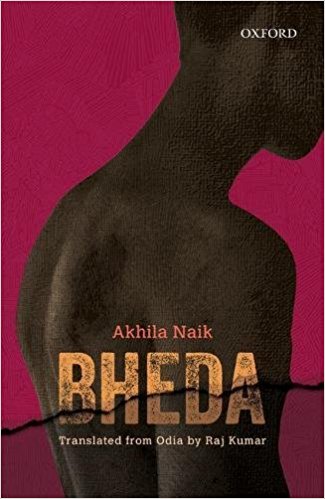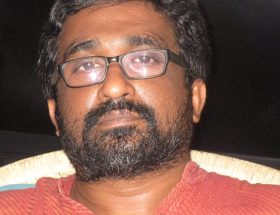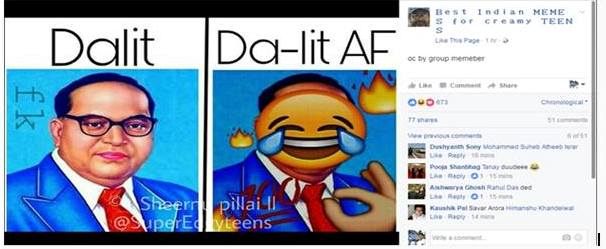Sayali Z
It is your claim to equality which hurts them. They want to maintain the status quo. If you continue to accept your lowly status ungrudgingly, continue to remain dirty, filthy, backward, ignorant, poor and disunited, they will allow you to live in peace. The moment you start to raise your level, the conflict starts. ~ Dr. Babasaheb Ambedkar

Akhila Naik’s debut novel – Bheda is a story of Dalit assertion and the violent conflict that ensues as a result of this assertion. It traces the story of how Dalits organize themselves, raise their voice and fight against a Brahminical system heavily stacked against them. In a simple yet sharp and powerful language, the novel presents its readers with deep insights into many of the socio-political failings in contemporary Odisha, in particular, and India, in general. Be it the rise of RSS, the increasing violence against Dalits or the rampant economic and social inequality, all of it can be traced to the one ugly giant called Brahmanism. The book cuts through the gimmick frequently peddled by progressive Brahmans that ‘their’ Hinduism is different from the violent Hindutva.
Each chapter of the book follows one of the central characters of the story. The book starts with the story of Dinamastre — the only Dalit school teacher in the village. Dinamastre represents an older generation of Dalits who were among the first to strongly stress on education as an effective tool for emancipation from the drudgery of caste and to achieve social and economic mobility. He would like his only son Laltu to get the best education possible so as to propel himself even further in life than his father was able to.
Laltu, on the other hand, represents a young generation who is keen on bringing about radical change through grass-roots activism. Laltu – an intelligent young man – who, like other Dalit children in his village, having faced untouchability himself, grows up to reject the Brahmanical Gods and traditions which sanction such practices. He leads his community, organizes workers and effectively puts a stop to the feudal practices of the Brahmin-Banias of his village.
The story then proceeds to trace the familial history of the Brahmin lawyer, Baya. An important yet oft-ignored examination necessary to interpret how Caste really functions and the economic and social capital it passes on from one generation to another at the cost of those oppressed by it. The reader now is able to understand how Baya’s forefathers consolidated their socio-economic standing by looting the locals and corrupting the political and legal system. This tradition was passed on to Baya who actively organizes RSS Shakhas and revives Hinduism in his village. He deems this revival necessary in order to counter the threat to the Varna-system from Dalits who are rejecting Hinduism to embrace Christianity or Islam. The author humorously caricatures Baya as the mad lawyer – who claimed to be a practicing lawyer, without any tangible record of him ever having fought a case in court. A hot head, Baya ‘quits’ his line of work to occupy the feudal position in the village and preside over his ancestral farmland.
The story then moves on to the Bania of the village, whose casteist and feudal mentality is revealed the moment workers in his factory strike for fair wages. He works with the Brahmin to sabotage — through legal and illegal means — every resistance Laltu and his community counters them with.
What is unique in this book is the attention to details like the nicknames the ‘respected’ Brahmin-Baniyas earn from the common people, caricaturing their gluttony, rage, and callousness. What also cannot be missed is the difference in the way the Brahmin-Baniya characters in the novel speak. For instance, they cannot resist using cusswords like ‘Saala’ at the end of every sentence forcing one to wonder if this is the refined and cultured language that they keep boasting about. The author thus effectively flips the Varna system on its head and makes the Brahmin-Baniya the focus of his subaltern lens.
The story also presents a progressive Brahmin journalist, who at first supports Laltu and gives him a voice in his newspaper, only to later malign Laltu using the same newspaper after he is falsely accused of throwing a cow’s bone in a temple. One is strikingly reminded of the warning Babasaheb gave when he said:
It is useless to make a distinction between the secular Brahmin and a progressive Brahmin. Both are kith and kin. They are the two arms of the same body and one is bound to fight for the existence of other. ~ Dr. Babasaheb Ambedkar
The unique storyline portrayed through the eyes of the different characters travels back and forth in time to reveal how seemingly isolated incidents are interconnected. Through these interwoven stories, the reader is confronted with the present scenario of the Brahmin-Baniya nexus busy in looting the land, forests, and resources of the country. It astutely binds together the casteist and communal forces like RSS with new-age ‘youth for equality’ activists-turned-politicians like Kejriwal to the same sacred thread that runs across their torsos.
~~~
Sayali Z is currently pursuing her doctoral degree in engineering at the University of Magdeburg, Germany. She can be reached at sayaliz@protonmail.com










